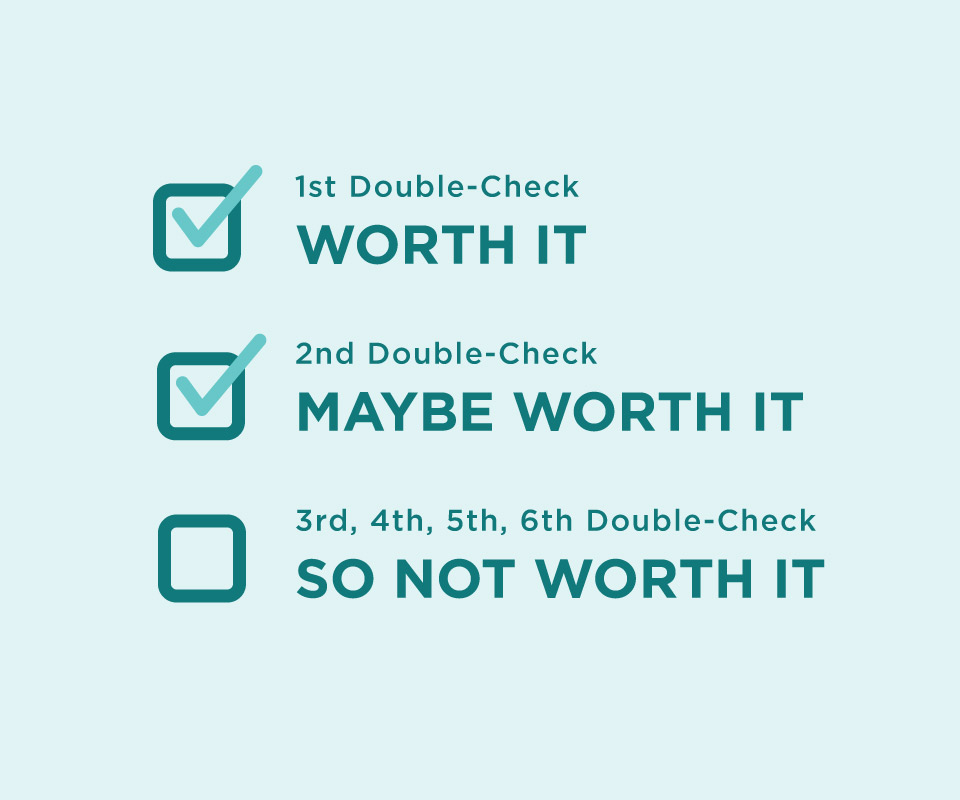“It’s okay to fail—as long as you give 110 percent.”
Ever since little league softball, we’ve had those feel-good cliches—never give up, leave it all on the field, blah blah blah—drilled into our heads. And for good reason:
when we do fall short, we can take comfort in knowing that we couldn’t have possibly done anything else to achieve the outcome we wanted.
That doesn’t make sense all the time, though. Not to sound like a quitter, but sometimes, it’s worth slacking—a little. Because the truth is, it’s physically impossible to operate at 100 percent all the time.
In trying to do so, you will deplete your resources. As a result, all output will cease.
You Can't Give 100 Percent
Whenever I see advice on how to “maximize your productivity” or “optimize your work environment” or otherwise work at 100 percent capacity 100 percent of the time (and don’t get me started on those articles about working “110% all the time”), I feel as if everyone is trying to program themselves for optimal efficiency like some well-oiled, content-generating machine.
Turn the self-discipline knob left, turn off the social media switch, and just cut the cat videos out of the equation, and BAM! Get a promotion or your money back.
The 80-20 Rule: Explained
But if you’re at the “paying your dues” stage of your career, every ounce of your hard work matters, right? The extra desk time, that third or fourth double-check, the late, late nights—all necessary to stand out, impress your boss,
get that promotion, or whatever...Right?
Not quite. Turns out that you can achieve most of your results with a lot less effort. This idea is called the
Pareto Principle and is best described as a power law distribution often used in mathematics. However, the Pareto phenomenon is not a formal mathematical equation.
Developed by Italian economist Vilfredo Pareto in 1896, the Pareto Principle is an observation that 20 percent of input results in 80 percent of output. Pareto observed that 80 percent of the land in Italy was owned by only 20 percent of the population.
In other words, it holds that you can achieve most of your results without the midnight cubicle marathons, the stress-induced migraines, the conference calls that just. won’t. end.
Think of it like trying to squeeze the toothpaste out of the tube. Just press your fingers together, and you’ll get most of the paste onto your brush. No sweat.
...But then you hit the bottom of the tube. All of a sudden, you’re twisting and turning your wrist, and basically giving yourself carpal tunnel, to squeeze out just enough toothpaste to cover your morning breath. Which is fine, but when you’ve got five minutes to apply your makeup, do your hair, and catch your train? Like, just splash some Listerine and stop at CVS on the way home.
Our productivity works the same way. When you first start a project, the ideas just spill onto the page. But once you’re “tying up the loose ends,” double- and triple-checking, agonizing over your word choice, or generally trying to turn pretty good into perfect, you stall. And stall. And stall.
Examples of the Pareto Principle
Once you're aware of the Pareto Principle, you might see it all around you. Pareto's Rule is uncanny in its application across all efforts and productivity. Here are a few examples of this principle in business.
Pareto Examples in Business
- An e-commerce site makes 80 percent of its profit from 20 percent of their product
- A website gets 80 percent of its traffic from 20 percent of their content
- A company sees 80 percent of its problems come from 20 percent of its employees (This is a whole other article.)
- 20 percent of the clients bring in 80 percent of the business
Pareto Examples in Personal or Everyday Life
- 20 percent of your friends bring 80 percent of your drama
- 20 percent of your complaints bring 80 percent of your procrastination
- 20 percent of your clothing is worn 80 percent of the time
- 80 percent of your day is taken up by 20 percent of tasks on your to-do list
Pareto himself saw this at work in his garden, when he noticed that 20 percent of his trees produced 80 percent of the fruit.
Using Pareto Analysis to Determine Cost/ Benefit Ratio
At some point, though, the costs start to outweigh the benefits. Stumbling over something pretty small at work? The migraine it causes and the extra time and energy you spend on something so small may keep you from accomplishing anything else.
Or let’s say you’ve ignored all of the busy work that’s clogging up your inbox because you’re not in the mood to “give it 100%.” So everything piles up. Situations like those stretch eight-hour days into 10 hours with after-hours emails. Pour 100 percent of your energy into every task and you won’t just waste time, you’ll stress yourself and eventually,
make yourself sick—which certainly won’t help your productivity.
Applying the Pareto Analysis means taking a look at your ratio and prioritizing from there. When it comes to your work, are there items that can be outsourced? Are there ways to reduce time spent on a lesser task to improve your input on a more efficient output? Are there ways to keep quality control in place by spending time upfront on proven generators of success?
Examples of Applying Pareto Analysis to Your Work:
- Spending 20 percent more time explaining a task to someone will make it 80 percent better.
- Checking your email 20 percent less will lead to 80 percent fewer distractions.
- Spending 20 percent more time proofreading reduces 80 percent of potential errors.
But once you apply the 80/20 principle to your work, you’ll find that most projects require less time, energy, and stress than you think.
How to Use Pareto Improvement on Your Task Lists
So the 80/20 rule makes sense in theory. All you have to do is find an imbalance or defects and shift the scale, right?
But when you’ve got six things to do before noon and your boss is breathing down your neck, how do you choose when and where to back off? Not like you can tell your manager, “I can get 80 percent of my output with my 20 percent of my effort—so I’m leaving at 10:00 am today.”
A Pareto improvement is an assistance that benefits one individual without causing impairment to another.
When you sit down each morning, realize that you’re spending 80 percent of your time on tasks that don’t contribute much to your bottom line. So think about the jobs that suck up your time and compare your effort to the potential payoff. Productivity expert Scott H. Young
recommends a straightforward method for doing this:
- 1. Write down all the broad categories of tasks you do at your job and the number of hours you spend on each (an hour for email, an hour for researching new leads, an hour for check-in meetings, etc.).
- 2. With a percentage, estimate how much you believe it contributes to your results.
This analysis helps to empower data-driven strategic planning. From there, you can cut out the high-cost, low-reward activities—like the demanding client that never pays on time or an unnecessary layer in an approval process. Treat it like a shopping trip—look for the bargains. For the projects you can’t eliminate, this exercise can encourage you not to get bogged down in the details.
You Can Also Use the 96-Minute Rule
Last, but not least, there is one fun application of the Pareto principle called the 96-minute rule. If you haven't guessed yet, 96 minutes is exactly 20 percent of an eight-hour workday.
The 96-minute rule maintains that employees should spend 96 minutes of their day on their most important tasks in order to
improve overall productivity.
Your Little League coach was right: you can—and should—give your all. But give your all to everything and you’ll have nothing left to give. Instead, start living by the 80/20 rule and save the stress for the things that are worth it.











